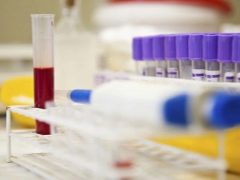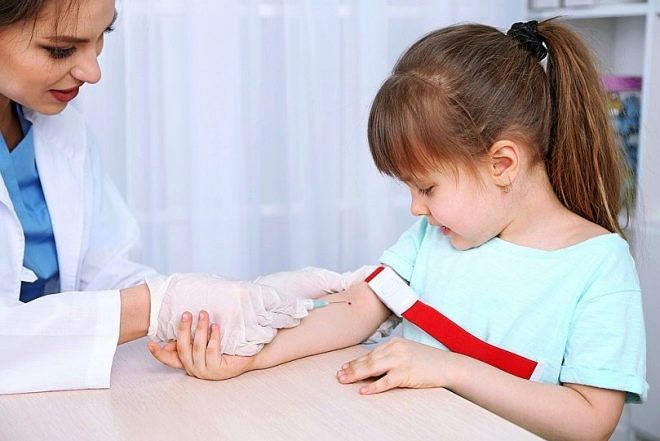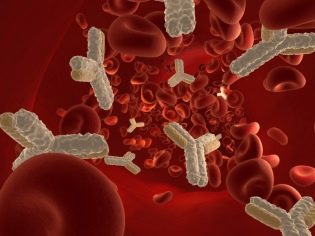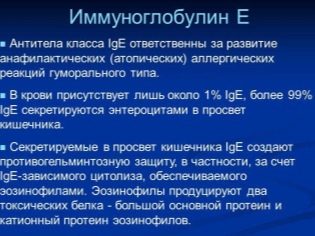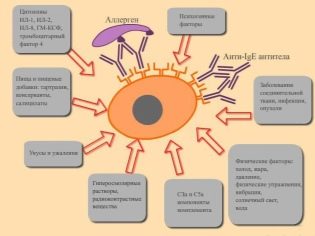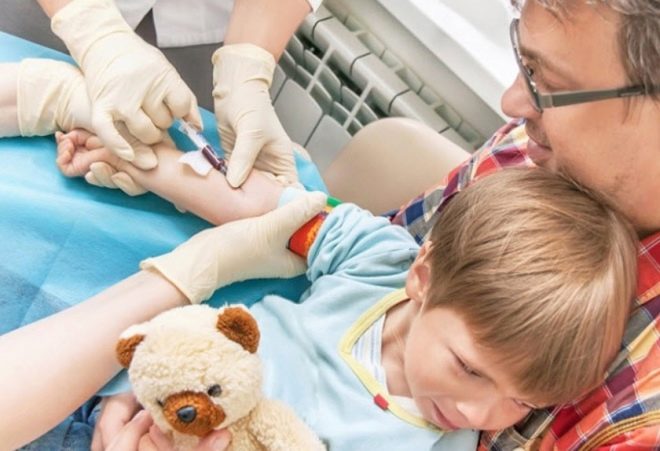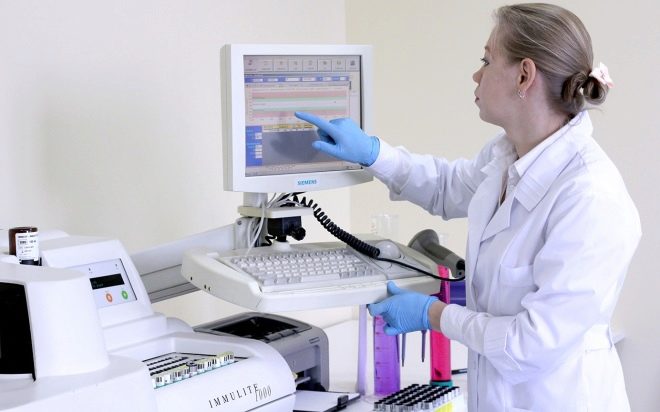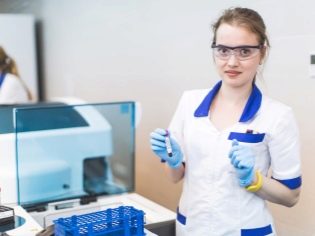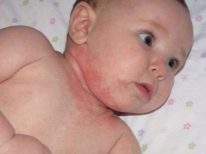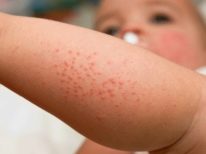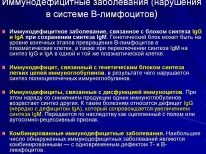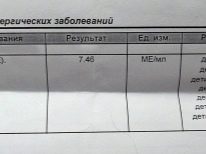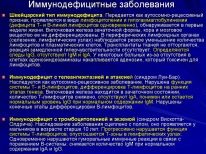Immunoglobulin E in children: norms and causes of deviations
Among all types of tests that can be administered to children, special attention should be paid to the immunoglobulin test. But it’s about this research that usually raises the most questions from parents.
In this article, we will tell you what an IgE test is, what it shows, how it is passed and how to decipher the results.
What it is?
A lot of invisible processes occur in the body of a sick child, which can only be guessed by using laboratory diagnostics. This is how the quantitative content of immunoglobulin type E, a substance that in a healthy child is produced in an extremely small amount, is determined.
Immunoglobulins E (Ig E) are antibodies of protein nature. They produce plasma cells in response to the danger to the body. They are located on the mucous membranes of the internal organs, which "on duty" have contact with the environment. These include spleen tissue, tonsil lymphoid tissue, Peyer's lymphoid plaques in the small intestine, and airway mucous membranes.
If we compare the amount of such antibodies with other antibodies in a child's body, then the immunoglobulin is one of the smallest: as part of the immune cells that guard the health of the baby, it is represented in an amount equal to only 0.001% of the total. In the blood, and more specifically in its serum, protein antibodies E can live up to 3 days. For the first time in a child, they begin to be developed even when the mother wears it under her heart - at about 11-12 weeks gestation.
What is amazing and unique immunoglobulins E? And the fact that they have the ability to settle and tightly attached to the membrane of basophils and mast cells. In this case, protein “guards” do not survive for three days, but for almost two weeks.
There are two types of protein immunoglobulins type E - total IgE and specific.
If the child suddenly has a runny nose and the doctor suspects that the cause could be an allergy, then he first checks the overall level of IgE. And if it is necessary to establish on which substance the children's organism gave such a negative reaction, specific immunoglobulins E. will be detected.
The tasks of these antibodies, as well as others, are quite simple and clear - to destroy an alien invasion at any cost. Type E antibodies are part of the "rapid reaction squad" - they are involved in the lightning reaction of the first type. Sometimes it is mistakenly called antiallergic, but it is not. It is because of the contact of IgE with a foreign antigen and an allergic reaction occurs. At the same time, it is quite clear exactly where the contact takes place - when there is a cold, the struggle goes on in the mucous membrane of the nasal passages, on bronchitis of allergic origin - in the mucosa of the bronchi, etc.
The level of immunoglobulin E is determined by a special blood test.
How is the analysis performed and what does it show?
If the child is recommended to have a blood test for IgE, then a little preliminary preparation will be required. It is advisable to donate blood on an empty stomach and in the morning, a newborn can be given a breast 2.5-3 hours before the test, a baby 4 hours, and the rest of the children are given food last night.
Two days before delivery, you should limit fat, smoked, salty.
It is important that the child does not over-exert, remains calm, because stresses on the eve of blood sampling may adversely affect its biochemical composition.Blood is taken venous, and then the parents will have to be present with the baby so that he will give a small injection.
The analysis is carried out using an immunoassay system in a clinical laboratory. Recently, almost all laboratories are equipped with Immulit 1000 or 2000 analyzers. Such devices give detailed information even on the content of specific immunoglobulins of type E in ultralow quantities, which allows to detect allergic reactions at the earliest stages.
What does this analysis show in children? In fact, their ability to repel attacks of antigens from the external environment. If there is already an allergy, the analysis will help to answer the question of what and on what scale negative reactions occur. This will help choose the right tactics for treating a child. Also, the analysis is recommended in other situations.
Indications for the appointment of such a survey are quite wide:
- transplantation of tissues or organs is planned;
- cancer treatment is planned;
- he underwent a course of treatment with immunosuppressive drugs (suppressors);
- the child had a great loss of blood;
- viral and bacterial infections;
- various pathologies of the thyroid gland;
- a child has a positive HIV status;
- the doctor has suspected systemic lupus, rheumatoid arthritis and other serious illnesses;
- allergy;
- prolonged and progressive pneumonia, several episodes of pneumonia over the past 2 years;
- protracted and intractable fungal infections;
- pyoderma and other pustular skin diseases.
Normal values
When a foreign antigen enters the child’s body for the first time, protein IgE binds to it. It turns out the complex, which starts the production of protective cells in the body, aimed exclusively at a specific antigen. But in children the immunity is weak and imperfect, and therefore an excessive reaction to antigens is not at all uncommon. With repeated ingress of antigen, the development of allergy is not excluded.
In the course of life, a person’s immunity is “trained”, and the amount of type E immunoglobulins gradually increases. The rate of IgE in children depends on age. Baseline values and indicators for a healthy child are presented in this table:
Regulatory values of immunoglobulin E in children
Age of the patient | Normal value |
Newborn and children up to 2 months | 0.01 - 2.0 IU / ml |
Infants 3-6 months | 2.5 - 10.0 IU / ml |
1 year old children | 8.0 - 30.0 IU / ml |
Children from 2 to 5 years | 9.0 - 60.0 IU / ml |
Children from 5 to 15 years | 30 - 200 IU / ml |
Teens over 15 years old | 25 - 100 IU / ml |
Decryption should be done by a medical professional. It will be difficult for parents to take into account certain nuances, for example, the equipment features of some laboratories, which give results not in IU / ml, but in ng / ml.
If you really want to calculate everything yourself, then use our instructions. Having obtained the results of the analysis in ng / ml, before consulting the table and answering the question whether the child’s indicators are normal, Multiply the given numbers in ng / ml by a factor of 0.42. In other words, 1164 ng / ml is 489 IU / ml, etc.
Elevated values
If the serum immunoglobulin E in a child’s blood is high, it almost always indicates the development of an allergic reaction. The stronger the allergy, the more IgE will be increased. Allergies common in childhood are the main cause of an increase in type E immunoglobulin. An overestimated amount of these antibodies may indicate the presence of food allergies, pollinosis, allergic rhinitis, atopic bronchial asthma, or atopic dermatitis in infants, the analysis may show allergies to medicines, household chemicals etc.
However, in order to establish the exact antigen, sometimes additional research is required, for example, allergy tests.
If there are no signs of allergy, and type E immunoglobulin is overestimated, then the doctor will certainly ask if the parasites, worm infestations, have settled in the baby’s intestines. These antibodies with rapid growth and react to them. Also, high IgE sometimes means the presence of myeloma, immune pathologies, as well as some types of tumors.
Each specific situation should be reviewed by doctors, additional examinations will be appointed, which will show the true reason for the increase in the serum of immunoglobulins E.
To reduce these values, you need to begin to treat the underlying disease. Since the most common cause is allergy, parents should create an allergen-free space for the child. He should not be in contact not only with what caused the inadequate reaction of his body, but also with other potentially dangerous allergens. It is usually recommended to declare war on house dust, pet hair, adjust baby food - eliminate all highly allergenic foods from the diet.
Antihistamines, which the doctor will prescribe, will help relieve sensitization; in some cases, hormonal treatments are indicated if allergies are severe.
Mom and Dad will need to pay special attention to strengthening children's immunity - as it stabilizes, there will be no excessive reactions and high production of immunoglobulins E and other antibodies, which will reduce the allergy to a minimum or avoid it altogether.
This requires walks in the fresh air, hardening, exercise, normal healthy sleep, nutrition rich in vitamins and minerals.
Low values
Reduced immunoglobulin E in children is a completely normal situation, as can be easily seen, simply by looking once more at the table of normative values. Still, a significant backlog from the norm can be a sign of alarming: this is how some congenital pathologies of the immune system appear, sometimes inherited from parents with genetic information. It is important to know that such conditions are rare but the diagnosis is desirable to hold up to three years of age.
If at 2 years in a child the level of these antibodies is about 0 or is 2-3 IU / ml, then it is necessary to visit an immunologist.
Low immunoglobulin E may be the result of a congenital abnormality of blood cells - type T lymphocytes, in this case, the production of IgE is insufficient. If the level is lowered, this may be due to a decrease in the size of antibodies due to a deficiency of B-lymphocytes (hypogammaglobulinemia). The presence of malignant tumor processes in the body of the child also in laboratory diagnosis gives a picture of a decrease in IgE.
It should be noted that all these states somehow manifest themselves on the physical level. If there are abnormalities in T-cells, children usually lag significantly behind their peers in development, and discoordination of movements may suffer. Children with a deficiency of lymphocytes B often get sick for a long time, even a simple viral infection almost always gives them serious complications that are difficult to treat.
Conclusions and reviews
Mothers of allergic children with experience usually are well-versed in the values of the analysis for immunoglobulin E, they easily operate on numbers and know what the observation in dynamics means. It is much harder to understand parents who have experienced child allergies for the first time or have done an analysis for other indications.
In any case, there is no need to worry, because no one will diagnose diagnoses on the basis of this study, additional diagnostics will be required. With regard to allergies, with age it is in most children passes, "overgrown", and showed tests for IgE come in full compliance with the norms.
You will learn more about immunoglobulin E in the next video.
